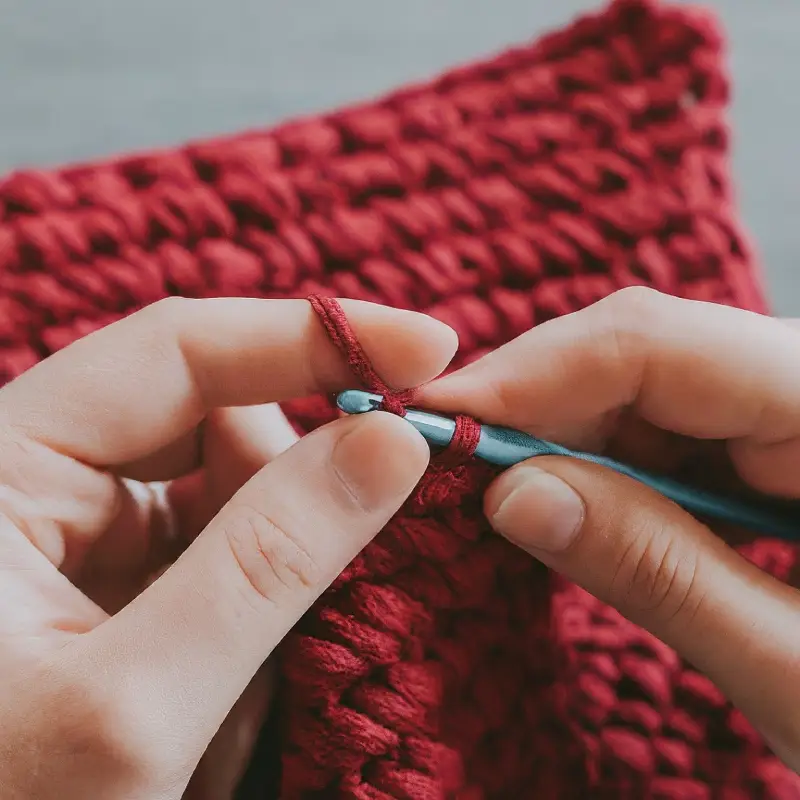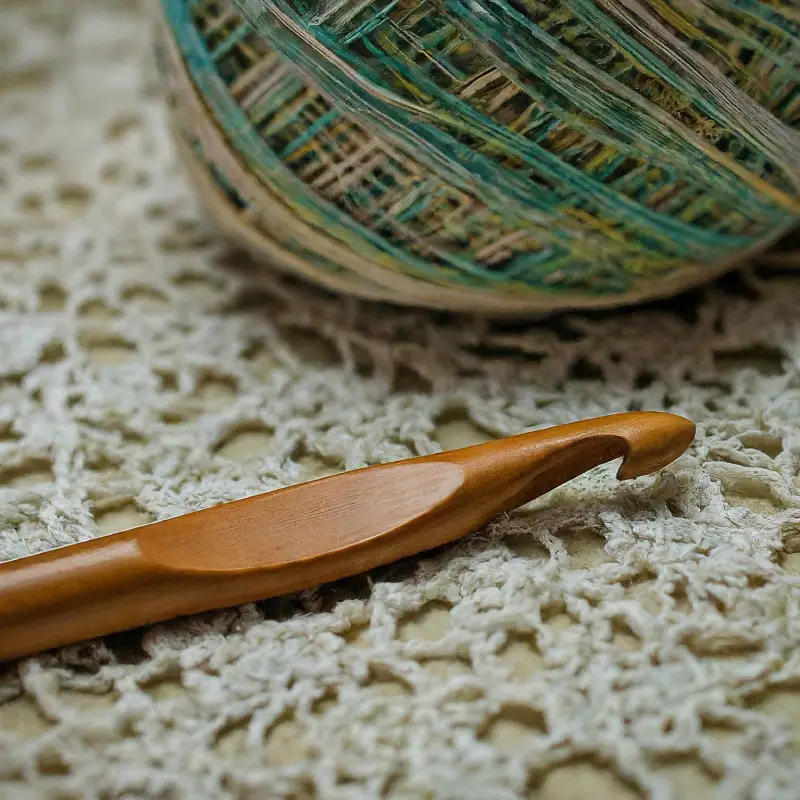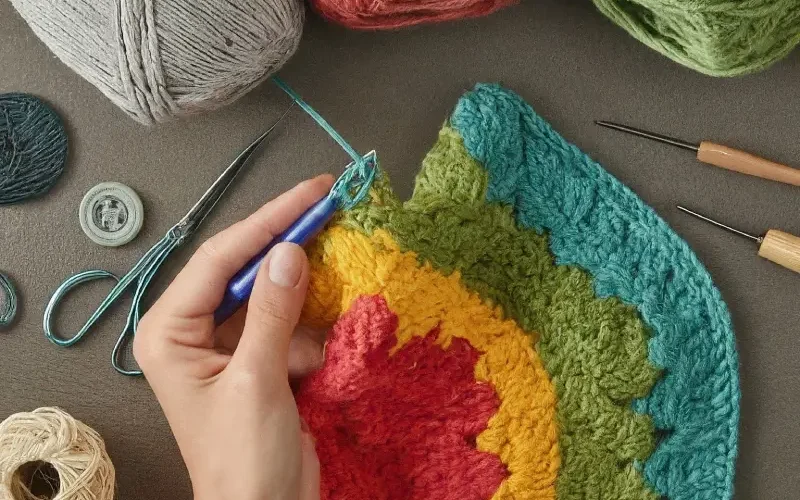How to Read Crochet Patterns: A Comprehensive Guide for Every Crocheter
If you’ve been in the crochet world for a while, you’ve probably seen some beautifully written crochet patterns that might have left you scratching your head.
While crochet patterns can seem like a foreign language at first, once you understand how to read them, they open up a whole new world of creative possibilities.
Whether you’re a beginner eager to start your first pattern or a seasoned crocheter looking to brush up on your skills, this post will walk you through the ins and outs of reading crochet patterns with confidence and ease.
So, grab your hook and yarn, and let’s decode those patterns together!
Why Learn to Read Crochet Patterns?

Before we dive into the details, let’s talk about why learning to read crochet patterns is so important.
Crochet patterns are like roadmaps, they guide you through the process of creating a specific project, from the first stitch to the final piece.
Knowing how to read a pattern allows you to:
Expand Your Crochet Repertoire
Patterns give you access to a vast array of projects, from simple scarves to intricate lace shawls.
Ensure Consistency
Patterns provide specific instructions to ensure your finished product looks exactly as intended.
Learn New Techniques
By following patterns, you can learn new stitches and techniques that you might not have tried otherwise.
Understanding the Basics: Crochet Abbreviations

The first thing you need to know about reading crochet patterns is that they’re often written using abbreviations.
This shorthand language saves space and makes patterns easier to read.
Here’s a list of some of the most common crochet abbreviations you’ll encounter:
- ch: Chain
- sc: Single crochet
- dc: Double crochet
- tr: Treble crochet
- sl st: Slip stitch
- hdc: Half double crochet
- sk: Skip
- yo: Yarn over
- rep: Repeat
- tog: Together
- sp: Space
- st: Stitch
These abbreviations are typically consistent across most patterns,
so once you learn them, you’ll be able to read any crochet pattern with ease.
Key Components of a Crochet Pattern
Now that you’re familiar with some basic abbreviations
Let’s break down the key components you’ll find in most crochet patterns.
Pattern Title
The title gives you a glimpse of what the project is.
It might be as simple as “Granny Square” or something more descriptive like “Lacy Scarf with Fringe.”
Skill Level
Patterns often include a skill level to help you gauge whether the project matches your experience.
These levels typically range from Beginner to Advanced. Here’s a quick rundown:
Beginner: Simple projects using basic stitches like single crochet and double crochet.
Easy: Slightly more complex patterns that might introduce basic shaping or color changes.
Intermediate: Projects with more intricate stitch patterns, shaping, and possibly seaming.
Advanced: Patterns that involve advanced techniques, complex stitch patterns, and detailed shaping.
Materials List
This section lists everything you need to complete the project, including:
Yarn: The type, weight, and quantity of yarn required.
Hook Size: The recommended hook size to achieve the correct gauge.
Other Supplies: Any additional materials like stitch markers, buttons, or stuffing.
Gauge
Gauge is crucial, especially for garments and items where size matters.
It tells you how many stitches and rows you should have per inch/cm to match the designer’s tension.
The gauge is usually measured over a specific stitch pattern (e.g., 4 inches of single crochet or double crochet).
Tip
Always make a gauge swatch before starting your project.
It might seem tedious, but it can save you from ending up with a piece that’s too large or too small.
Finished Size
This part of the pattern tells you the dimensions of the finished project.
For example, a blanket might be listed as 50″ x 60″, or a hat might be described as fitting a 20″ head circumference.
Stitch Key or Legend
The stitch key lists all the abbreviations used in the pattern along with their full names.
If the pattern includes any special stitches or techniques, they’ll usually be explained here.
Pattern Instructions
This is the heart of the pattern, where you’ll find the step-by-step instructions for creating your project.
Let’s take a closer look at how these instructions are typically formatted.
Decoding Pattern Instructions

Crochet patterns are usually written in rows or rounds, with each row or round described in detail.
Here’s how to read and interpret those instructions:
Starting Chain
Most patterns begin with a starting chain.
The pattern will tell you how many chains to make (e.g., “Ch 20”).
This chain forms the foundation of your work.
Working the First Row or Round
After the starting chain, you’ll typically see instructions like “Row 1: Sc in 2nd ch from hook and in each ch across.”
This means you’ll start by making a single crochet in the second chain from your hook, then continue making single crochets in each chain across the row.
If you’re working in the round, the instructions might say something like “Round 1: Ch 3, 12 dc in ring.”
This means you’ll chain 3 (which counts as your first double crochet), then make 12 double crochets into the center of the ring.
Repeats
Patterns often use repeat instructions to save space.
For example, you might see something like “Rep from * to end of row.”
This means you’ll go back to the asterisk (*) and repeat the instructions from that point.
Sometimes, repeats are written with brackets or parentheses.
For example, “(sc, ch 2, sc) in next st” means you’ll make a single crochet, chain 2, and another single crochet all in the next stitch.
Shaping
When creating garments or items that need shaping (like hats or sweaters), you’ll encounter instructions for increasing or decreasing stitches.
For example, “Dec 1 st at each end of the next row” means you’ll decrease one stitch at both ends of the row to shape the piece.
Joining Rounds
If you’re working in the round, you’ll often need to join the end of a round to the beginning with a slip stitch.
The pattern might say something like “Join with sl st to first dc.”
Finishing
Once you’ve completed the main part of the project,
the pattern will often include instructions for finishing, such as weaving in ends, blocking, or adding any additional embellishments like fringes, buttons, or borders.
Reading Charts and Diagrams

In addition to written instructions, some patterns include charts or diagrams.
These visual representations of the pattern can be incredibly helpful, especially for more complex designs.
Here’s a quick guide to understanding crochet charts:
Symbols
Each stitch is represented by a specific symbol (e.g., an “X” for a single crochet, an “O” for a chain).
Direction
Charts are typically worked from the bottom up.
Rows or rounds are numbered, so you know where to start.
Color Coding
Some charts use color coding to differentiate between different sections of the pattern.
Tips for Success
Reading crochet patterns can be tricky at first, but with practice, it becomes second nature.
Here are a few tips to help you along the way:
Take It Slow
Don’t rush. Take the pattern step by step, especially when you’re just starting.
Use a Highlighter
Mark your place in the pattern with a highlighter or sticky note to keep track of where you are.
Practice with Simple Patterns
Start with easy patterns to build your confidence before moving on to more complex projects.
Don’t Be Afraid to Ask for Help
If you’re stuck, don’t hesitate to reach out to the crochet community online or in person.
There are countless resources, forums, and groups where you can find help.
Voila
Learning to read crochet patterns is a crucial skill that will open up a world of possibilities for your crochet projects.
While it might seem daunting at first, with practice and patience, you’ll soon be reading patterns with ease, allowing you to create beautiful, intricate designs you never thought possible.
So, next time you see a crochet pattern that catches your eye, don’t be intimidated, grab your hook and dive in!
Remember, every expert crocheter was once a beginner, and with every pattern you complete, you’re one step closer to mastering this wonderful craft.
Join us on Crochet Patternz Community to get inspiration and also our page on facebook and pinterest and tiktok
Happy crocheting, and may your stitches be ever smooth!




